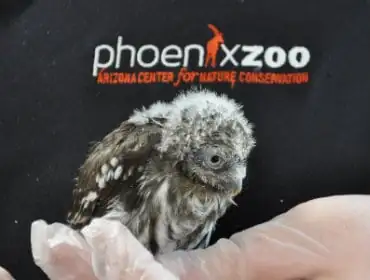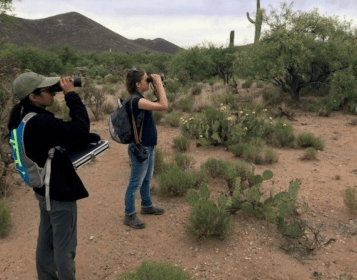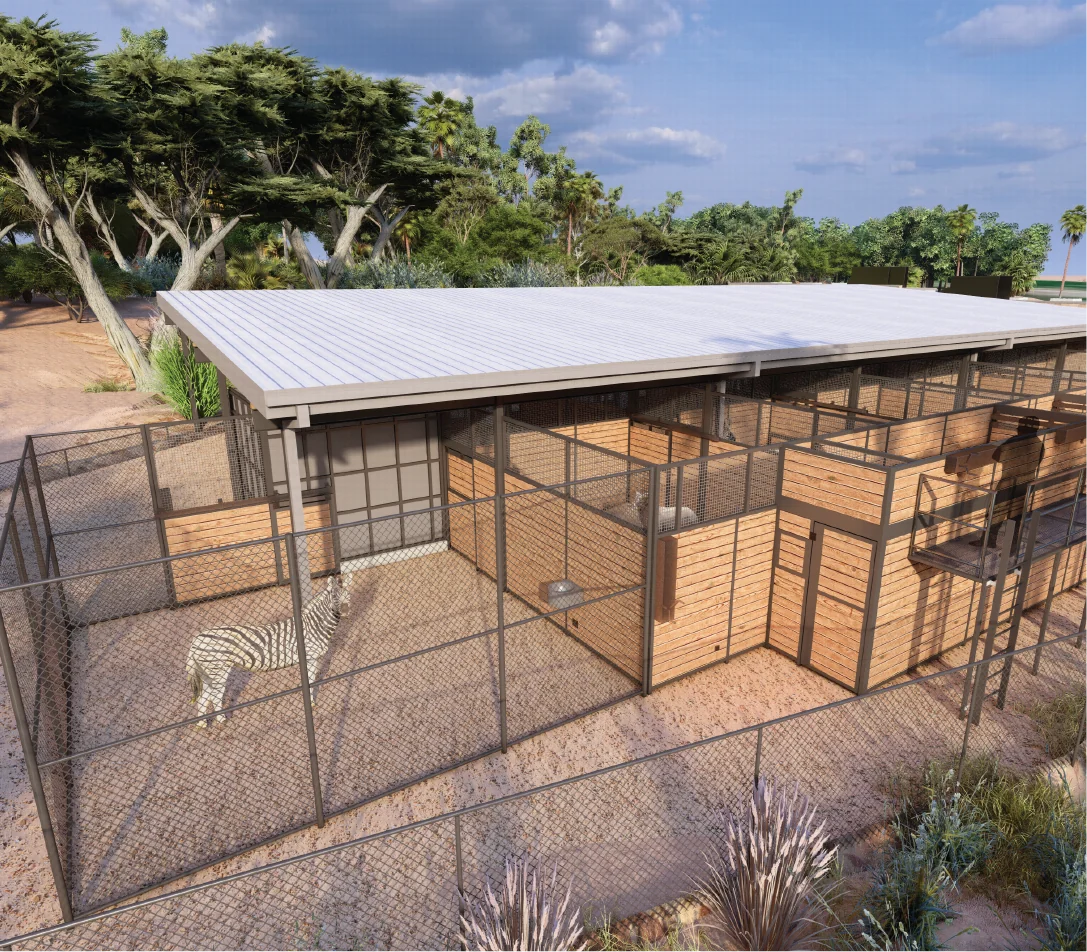cactus ferruginous
pygmy-owl
Living up to its name, the cactus ferruginous pygmy-owl (Glaucidium brasilianum cactorum) is a rust-colored raptor that weighs fewer than three ounces and typically nests in saguaro cactus cavities in Arizona. This subspecies of the ferruginous pygmy-owl is native to Arizona, southern Texas, and parts of northeastern and northwestern Mexico. Other subspecies range as far south as Argentina.
Cactus ferruginous pygmy-owls are non-migratory birds that typically live in desert scrubland areas. They are crepuscular, meaning that they are most active at dawn and dusk. Like other owls, they are predators and play an important role in their ecosystem. Pygmy-owls feed on reptiles, insects, small mammals, and birds. They are also preyed upon by other species, such as raccoons, hawks, snakes, and larger owls.
Pygmy-owls breed annually between late February and early June. They lay three to four eggs, on average. Hatching often happens in May, and the nestlings fledge in late May or June. Juvenile pygmy-owls remain under the watchful eyes of their parents for up to eight weeks after they leave the nest. At that time, they disperse to establish their own territories.
The cactus ferruginous pygmy-owl was historically found in Arizona as far north as the Phoenix region. But the owl’s range and potentially its population have been declining since the 1970’s due to habitat loss and other factors. They likely number in the low hundreds in the state and are listed as Threatened under the U.S. Endangered Species Act.
threats
habitat loss/
degradation
Climate Change/
drought
development
invasive species
How We Help
At the Phoenix Zoo
The Phoenix Zoo is part of a pilot breeding program for cactus ferruginous pygmy-owls. The program was started by Wild At Heart Raptor Rescue in 2006, and works in partnership with the US Fish and Wildlife Service and Arizona Game & Fish Department.
The Zoo’s Conservation and Science Department received its first pair of cactus ferruginous pygmy-owls in January 2018 from Wild At Heart. Working closely with the Arizona Game & Fish Department and the US Fish and Wildlife Service, several wild owls came to the Zoo in summer 2018 and were paired for breeding behind-the-scenes at the Zoo’s Arthur L. and Elaine V. Johnson Conservation Center. In May 2019, the Zoo celebrated its first successful breeding and hatching event for these owls.


in the field
In 2021, we celebrated the first releases to the wild of cactus ferruginous pygmy-owls hatched at the Phoenix Zoo. Working with our conservation partners, owls were released into two sites in southern Arizona. We also assist our conservation partners with efforts to monitor pygmy-owls in southern Arizona, and have collected data in the field to better understand wild pygmy-owl nesting.
conservation partners










